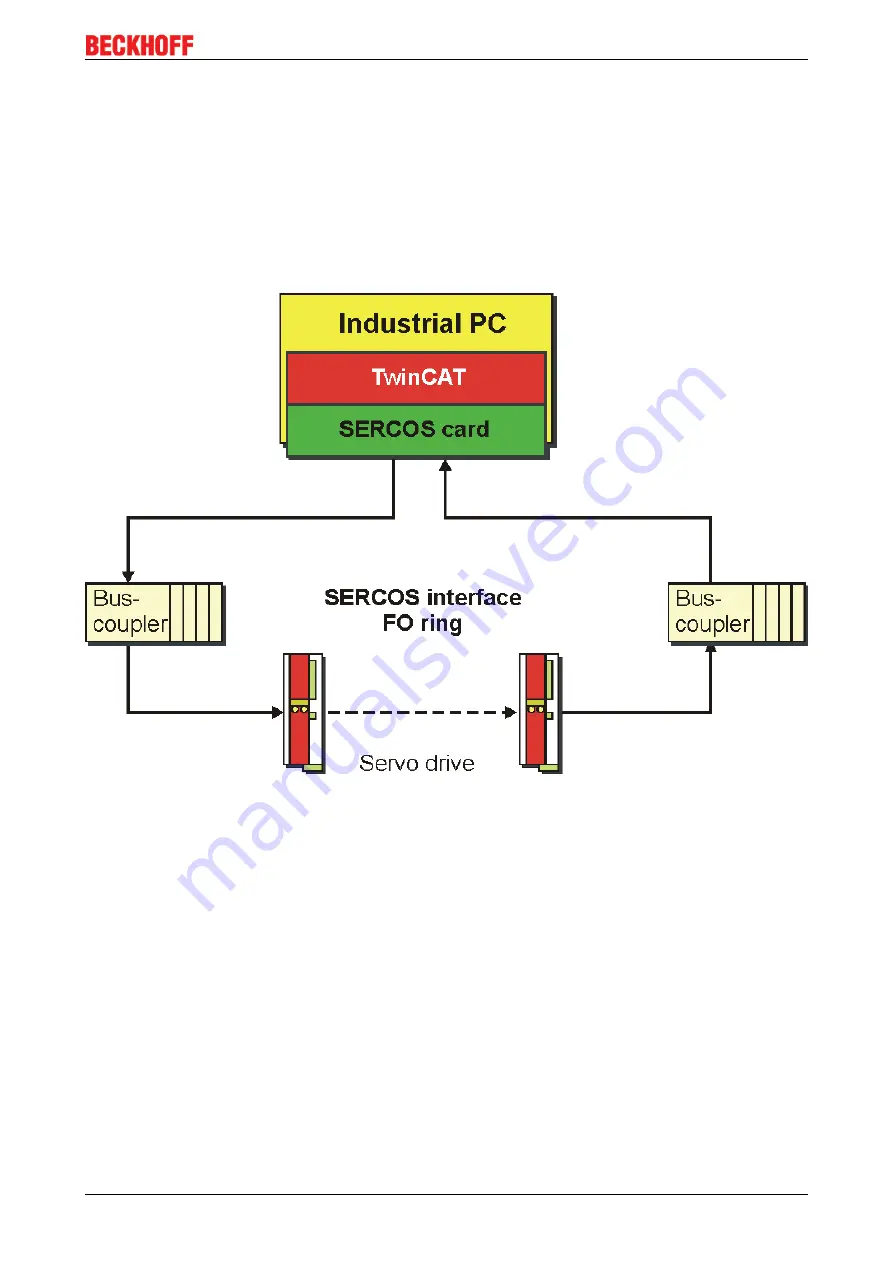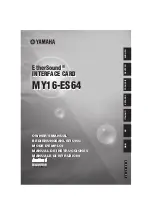
Product overview
FC7501 and FC7502
7
Version: 2.0
2
Product overview
2.1
System description
SERCOS is an open, fast bus system that has been the international standard (IEC 61491) for numerically
controlled machines since 1995. Meeting high real-time requirements and interference-proof transfer in
optical fiber technology are important features of this bus system, which is widely used for drive technology
applications. The bus consists of a master and of a number of slaves. In a SERCOS system, the servo drives
or the BK7500 SERCOS Bus Coupler represent the slaves.
Fig. 1: SERCOS interface optical fiber ring
The bus topology is a ring system, in which it is possible to operate up to 254 stations. The data transfer rate
is 2, 4, 8 or 16 Mbit/s. There are basically three types of telegram:
1. The master-sync telegram is received by all the slaves, and is used for synchronization.
2. The master data telegram is also received by all the slaves, and contains the cyclic data and the ser-
vice data.
3. The slaves send their data in the form of a drive telegram.
PC Fieldbus Cards for SERCOS Interface
Beckhoff specially developed the fieldbus cards FC7501 (single-channel) and FC7502 (double-channel) with
PCI interface for the SERCOS interface. The driver integrated in the TwinCAT automation software ensures
optimum performance of these passive master cards, so that compared with an active solution there are no
unnecessary restrictions with regard to the number of devices or the data length. This also enables larger
SERCOS projects with more than 50 axes to be realized. To do so several PCs are precisely synchronized
via SERCOS, whereby one PC is defined as the master and all the others as slaves. For these applications it
is interesting that the FC7502 double-channel card can handle one master ring and one slave ring. The
parameterization of the master/slave mode is carried out simply through the software.







































